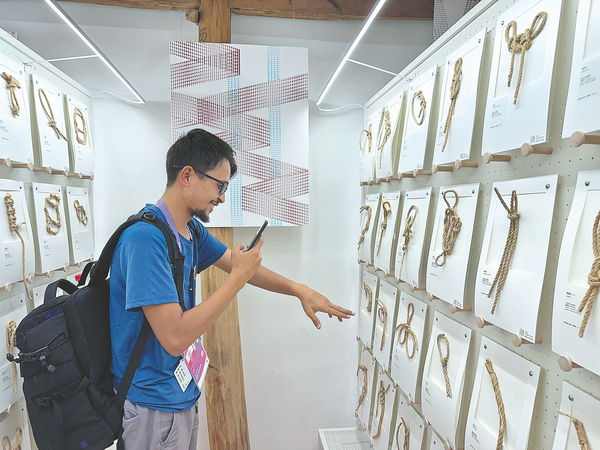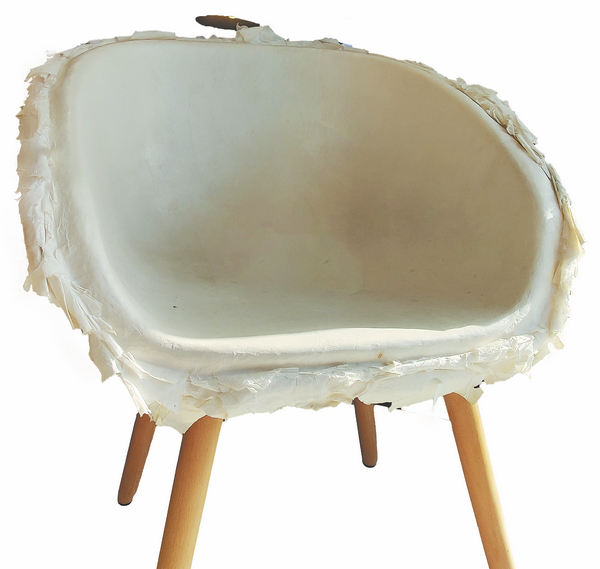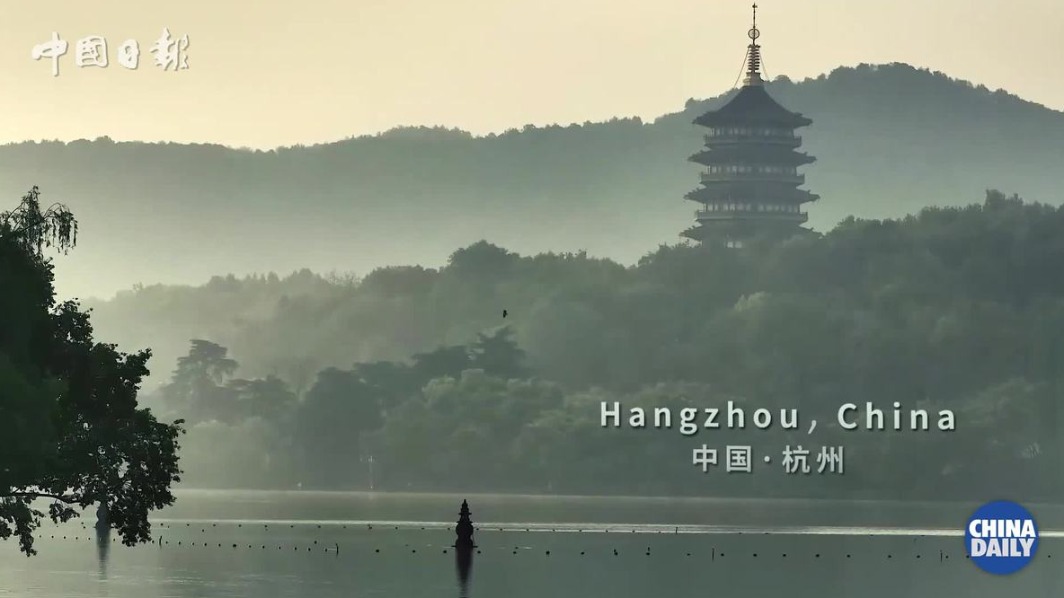crafting hangzhou's 'future tradition'

a visitor checks out some of the crafts on display at the workshop of serbian artist jovana zhang in qingshan village, zhejiang province. china daily
serbian artist's unique creations bringing china's rich cultural heritage to a modern audience
nestled amid lush mountains and a lucid reservoir, qingshan village in yuhang district lies some 40 kilometers to the northwest of hangzhou city's downtown area, with its roadsides and fields sprinkled with unique art installations.
jovana zhang (nee bogdanovic), an artist and designer from serbia, never expected to be living in this part of the world.
"but here i am, living in the village for over seven years," she said, with more years beckoning.
the "continuous re-creation" of intangible cultural heritage — integrating traditional chinese crafts with modern art and design — in local areas and across china is what jovana, her husband zhang lei and their german business partner christopher john are dedicated to.
"we first met in milan, italy, in 2009," jovana recalled of how the trio came to know each other. "in 2010, chris and i joined zhang lei and came to china."
at the time, zhang lei had already started making modern designs using traditional chinese crafts.
"when the ideas of modern design meet traditional crafts," zhang lei explained, "the resulting benefits can be infinite."
rich in intangible cultural heritage, zhejiang has about 300 items at the national level and nearly 1,000 items at the provincial level, 11 of which also appear on unesco's list of intangible cultural heritage.
it was also in 2010 that the trio met liu youquan, an inheritor of the oil-paper umbrella craft, an intangible cultural heritage item in yuhang district.
in liu's workshop, they studied for months and tried their hands at all the 72 steps involved in making a traditional oil-paper umbrella.

china daily
they were particularly fascinated by one step known as "wet paste", in which whole pieces of paper are soaked with glue and then pasted layer by layer onto the umbrella ribs.
borrowing the technique, the trio applied it to a series of other items, creating such daily articles as lampshades. they also boldly proposed to use it to make paper chairs without any pre-existing frame.
in 2012, a paper chair they made, which they named piao (literally meaning "floating"), was exhibited at milan design week in italy.
thanks to its sturdy and innovative design, the chair won the design report award at the salonesatellite exhibition during the design week.
indeed, china's rich knowledge of traditional handicrafts has proved to be a constant fountain of inspiration for artists like jovana.
using the "ice crack" pattern of traditional chinese window screens, as well as a sunmao (mortise and tenon joints) structure, they built a shelf with modular parts, which can be added to in an endless fashion.
they've also created artworks with distinctive chinese characteristics that are themed on silk, bamboo, earth and metal.
in 2015, the three cofounded the rong design library, a project that focuses on the protection and preservation of traditional chinese crafts and materials, the first of its kind in the country.
"rong, a common chinese character, refers to melting and fusing," explained jovana, "melting and deconstructing traditional chinese crafts into materials and techniques and fusing them into contemporary design, 'future tradition', as i call it".
two years later, the team decided to move the library from urban hangzhou to rural qingshan, where "it is closer to nature and tradition", she said, and a disused auditorium was restored to serve as the location.
now, the wooden rammed-earth auditorium, which itself uses traditional chinese architectural materials and skills, houses thousands of traditional chinese handicraft materials, such as paper, textiles and ceramics, among others.
it doubles as an artistic residency. a few dozen of top artists and designers from home and abroad have stayed in the library, drawing inspiration from chinese crafts for their creations.
the arrival of these artists has undoubtedly reignited enthusiasm for the cultural traditions of qingshan and helped the village's rural vitalization efforts and pursuit of common prosperity by boosting its cultural and tourism industries. figures show that some 30,000 visitors travel to the village each year and its collective annual income has grown to more than 1.5 million yuan ($207,800).
the picturesque landscape in and around qingshan village has also proved to be a boon for outdoor enthusiasts like jovana, an avid cyclist, and john, a roller-skating aficionado.
"i would very much like to watch some of the games in person," said jovana, who has been following the asiad closely. "but the tickets are all sold out!"
qixiao@chinadaily.com.cn
-
'nice' to meet you, hangzhou
may 6, 2024

